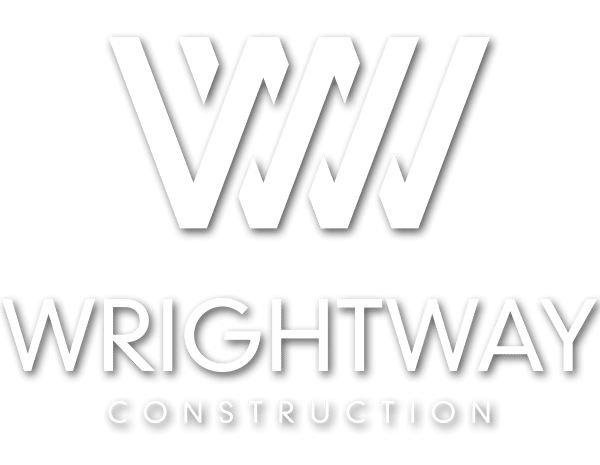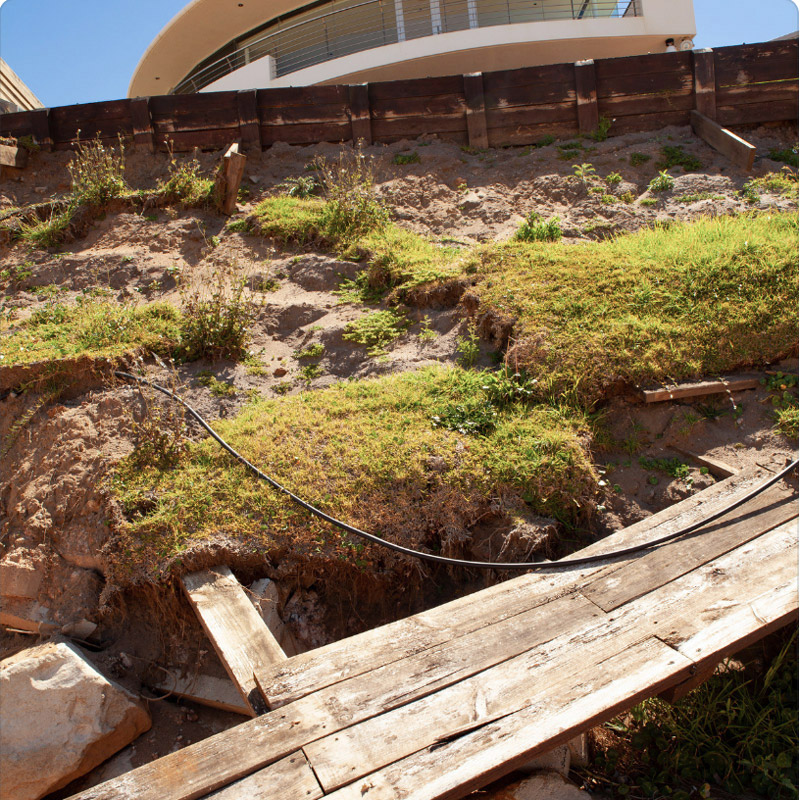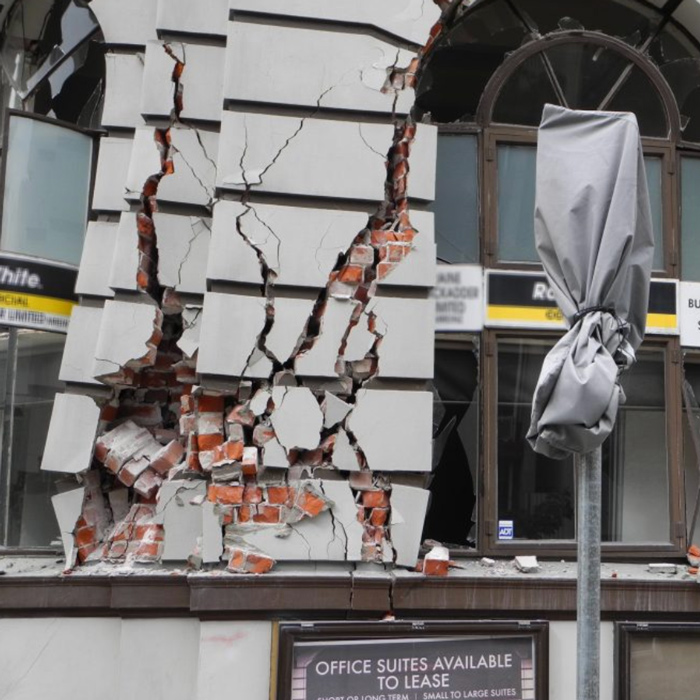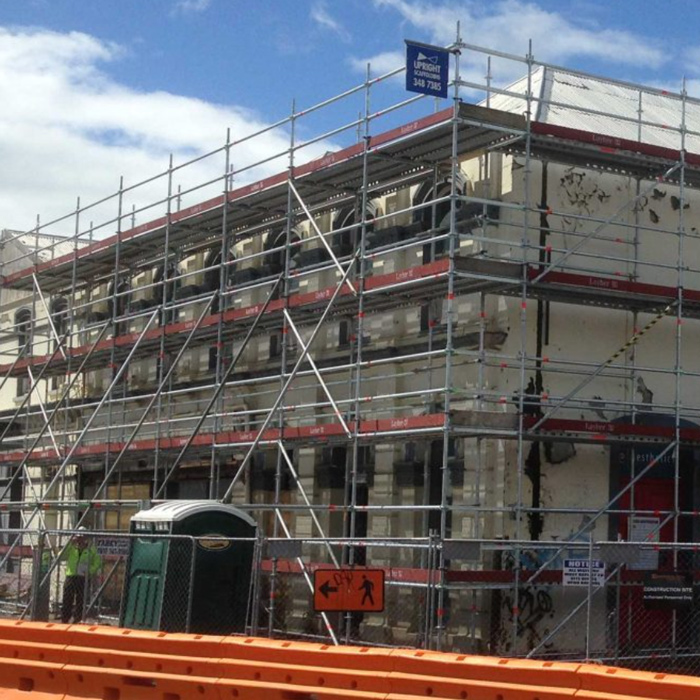Earthquake Strengthening
Earthquake Prone Buildings
In 2017, owners of earthquake prone buildings were notified by EPB notice that seismic strengthening is required for public safety. Your earthquake prone building will need strengthening by 2032 at the latest, or for high-risk areas, by 2024, and this means repair strategies need to be planned sooner rather than later, or your property will be uninsurable. This comes at a great cost that's hard to swallow for owners, so Wrightway has manufactured several scenarios, including joint ventures to assist. If you've delayed the earthquake strengthening process, or if you're unaware of if your building is compliant, then our team of qualified engineers can visit your Canterbury property for a building inspection, a detailed report and a scope and estimate for the upgrades to be carried out.
Insurers, Councils & Earthquake Prone Buildings
Insurance companies MAY deem your building uninsurable, unless your building reaches the minimum standard of 32% Earthquake resistance. It's intended that all buildings will need further strengthening to 64% before 2028. If owners don't take action in strengthening their buildings, then councils have the power to deem the building unsafe, meaning that people won't be able to enter your building. Wrightway can help you by seeing the entire process through end-to-end. From the building assessment to the scope of works, and carrying out the repairs with project management and detailed reporting sufficient to satisfy council requirements. We document everything in a format preferable to insurers. Wrightway has been working with local councils and the Earthquake Commission of New Zealand for over a decade now, and is one of the few preferred Earthquake repair and construction specialist companies still operating.
Body Corporates & Seismic Strengthening Costs
If you're operating a body corporate, regardless of whether the property is residential or commercial, and you're struggling to obtain agreement on the expense of earthquake strengthening, then we'll happily discuss the options with the full committee. There are many repair strategies that Wrightway has specifically developed to assist you, including joint ventures, financing, and deferred payments. Please reach out for a confidential discussion.
Our Earthquake Strengthening Process.
Quick Response
Our team of earthquake strengthening engineers will visit you on-site to assess what repairs are required to bring your building up to the required standard. We usually respond to your request within 24 hours and can be onsite within several days.
Seismic Strengthening Assessment
Your initial assessment will take place as soon as we’re on-site, so please ensure you have access to all areas of the building when meeting with our team. If we uncover any hazardous and urgent damage or deterioration to your building, we’ll notify you of this and schedule temporary repairs almost immediately, assuming you’re happy to proceed.
Scope of Works
Earthquake strengthening includes a detailed scope of works report, including photos, estimated costs and a timeline. Your scope of works can usually be processed within 14 days of the assessment.


When On-site
When on-site, we’ll make as little disturbance as possible, although there may be times where we need to shut off power, access elevator shafts. We’ll give you suitable notice prior to our visit so you know exactly what to expect, and so you can issue a notice to your tenants. You’ll be then issued with an EPB rating, listed in the public EPB register and to be displayed in clear sight in the building foyer.
Quality Assurance
Assuming you choose to proceed with the strengthening of your earthquake prone building, we’ll document all repairs and workmanship in writing accompanied by photos. You’ll have an excellent record that you, as the building owner, have fulfilled your requirements, and it’s ideal for submitting to your insurer and council. Internally we have a 2-step, fail-safe sign-off process, and once completed, you’ll be requested to sign off that the strengthening process has been completed to your satisfaction and legal requirements.
Completion
Your building will now be up to standard, and you’ll have the paperwork to approach insurance companies. Our senior staff will connect with you over the coming weeks and months, to ensure there isn’t anything else that you’ve noticed, or that needs rectifying.
Frequently Asked Questions
As per the Building (Earthquake-prone Buildings) Amendment Act 2016, Seismic strengthening is required to have occurred by 2032 at the latest, or for high-risk areas, by 2024.
Territorial Authorities use an EPB rating (earthquake prone building rating) to determine how well the building could perform in a moderate earthquake, how engineers assess buildings for EPB rating and how Territorial Authorities determine whether a building, wholly or in part, meets the criteria for being earthquake prone.
The first thing you should do is turn off the power and keep your family safe. Stay well away from the damaged area and then call your insurance company and let them know what has happened. They will be able to guide you through the next steps, but also give you an idea of what they will cover. Then call a New Zealand storm restoration company like Wrightway Construction to urgently assess the damage and create a scope of works for the storm repairs.
Seismic strengthening is the process of retrofitting or upgrading existing structures to improve their resistance to earthquakes.
Seismic strengthening is important to protect the safety of building occupants and to minimize damage to buildings during an earthquake.
Older buildings, particularly those built before modern building codes were implemented, and buildings located in seismic hazard zones are most at risk and may need seismic strengthening.
Methods used for earthquake strengthening include adding structural elements such as shear walls or seismic dampers, installing structural steel bracing, reinforcing existing structural elements, and improving the connections between structural elements.
A structural engineer can conduct a seismic assessment to determine if a building needs seismic strengthening. You will be notified by your local council that you potentially have an earthquake prone building and an EPB notice will be issued to you.
The cost of seismic strengthening can vary depending on the size and complexity of the building and the methods used for strengthening. A detailed cost estimate can be provided by our structural engineers once a structural design is implemented.
The length of time for seismic strengthening can vary depending on the size, the composition & complexity of your building and the methods required to bring your building up to standard. A detailed schedule can be provided by Wrightway at the beginning of the process once a structural design is implemented. Wrightway Construction NZ offers free building assessments.
It depends on the methods used for seismic strengthening and the schedule of works. Our structural engineers can advise on the feasibility of occupying the building during the assessment process.
Can't find the answer you're looking for?
Ask us here.




